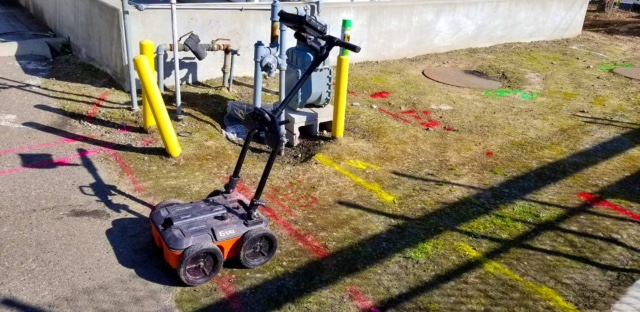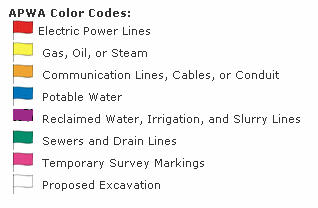Utility Locating / Ground Penetrating Radar
LOCATE UNDERGROUND UTILITY LINES
Underground utility lines need to be accurately located prior to any destructive processes that may cause any damage, which can result is severe service interruptions and dangerous leakages.
The prevention of damages to buried facilities, protection of our natural resources, and the ensured safety of the public as well as the industry workers are common interest. Safe2core utilizes the latest equipment available to utility locate Gas lines, Electrical lines, Water mains, Storm drains etc. before you dig. With the addition of Ground Penetrating Radar (GPR) and Global Positioning Systems (GPS) to traditional locating systems, we can provide you with complete data of subsurface site conditions.
Gas, electrical, fiber optics and water supply and drainage lines need to be accurately located prior to any destructive processes that may cause any damage, which can result is severe service interruptions and dangerous leakages. Public Safety can be seriously compromised if underground excavations are performed without prior inspection of underground utility lines.
The best results are achieved when multiple methods and techniques are used on each locate. Safe2core uses both direct connection and passive induction methods in all of our Utility Locating Projects.
On a typical Utility Locating project our technicians will use Ground Penetrating Radar, Radio Detection and 2 box metal detectors to achieve high degree accuracy.
Ground Penetrating Radar (GPR) is very good at finding things that no other method can find; however, the success is highly dependent on substrate composition and conditions.
Reflection – Metal such as a steel plate or in some cases heavy reinforcement in concrete can reflect close to 100% of the signal back at the unit leaving whatever is under the metal undetected.
Dispersion – High water content or other factors can cause the signal to spread to the point that there is very limited signal return to the unit.

Absorption – Some materials absorb the signal from the unit leaving little or no signal to return to the unit.
RF Locating is very good at finding pipes, conduits, sewer lines, etc. that a signal can be applied to or inserted into.
RF locating depends on conductive material for most locating so plastic lines cannot be located without a continuous tracer wire.
When using RF locating for sewer and storm lines, an access point is necessary for the insertion of a transmitter on a flexible rod. Obstructions such as roots and debris can prevent the transmitter from passing through the line.
2-Box Metal Detectors are very good at finding cast iron or ductile iron pipes. Also, other metallic targets such as USTs and drums.
Reinforced concrete or metal debris and scrap in the area can prevent successful use of metal detectors.






